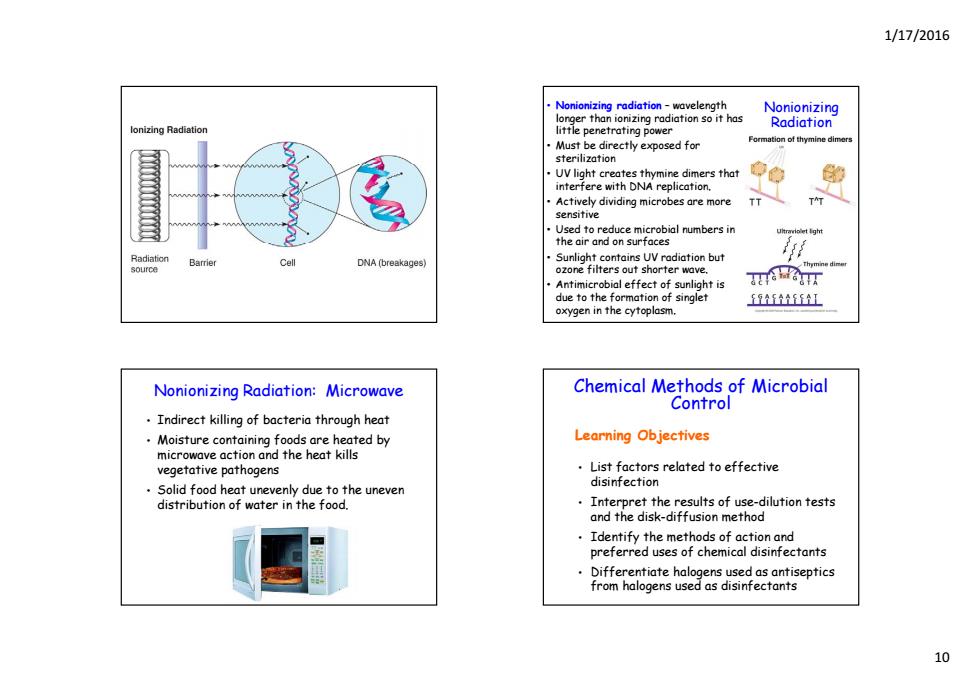正在加载图片...

1/17/2016 wavelength Nonionizing lonizing Radiation epenernhs Radiation Must be directly exposed for Fon ationof thymine dimer sterilization UV light creates thymine dimers that interfere with DNA replication. Actively dividing microbes are more TT sensitive Radiation source Barrier Cell DNA (breakages) Sunlight contains UV radiation but ozone filters out shorter wave. Antimicrobial effect of sunlight is r due to the formation of singlet G92121112T oxygen in the cytoplasm. Nonionizing Radiation:Microwave Chemical Methods of Microbial Control Indirect killing of bacteria through heat Moisture containing foods are heated by Learning Objectives microwave action and the heat kills vegetative pathogens List factors related to effective Solid food heat unevenly due to the uneven disinfection distribution of water in the food. Interpret the results of use-dilution tests and the disk-diffusion method Identify the methods of action and preferred uses of chemical disinfectants Differentiate halogens used as antiseptics from halogens used as disinfectants 101/17/2016 10 • Nonionizing radiation – wavelength longer than ionizing radiation so it has little penetrating power • Must be directly exposed for sterilization Nonionizing Radiation • UV light creates thymine dimers that interfere with DNA replication. • Actively dividing microbes are more sensitive • Used to reduce microbial numbers in the air and on surfaces • Sunlight contains UV radiation but ozone filters out shorter wave. • Antimicrobial effect of sunlight is due to the formation of singlet oxygen in the cytoplasm. • Indirect killing of bacteria through heat • Moisture containing foods are heated by Nonionizing Radiation: Microwave g y microwave action and the heat kills vegetative pathogens • Solid food heat unevenly due to the uneven distribution of water in the food. Learning Objectives Chemical Methods of Microbial Control • List factors related to effective disinfection • Interpret the results of use-dilution tests and the disk-diffusion method • Identify the methods of action and preferred uses of chemical disinfectants • Differentiate halogens used as antiseptics from halogens used as disinfectants